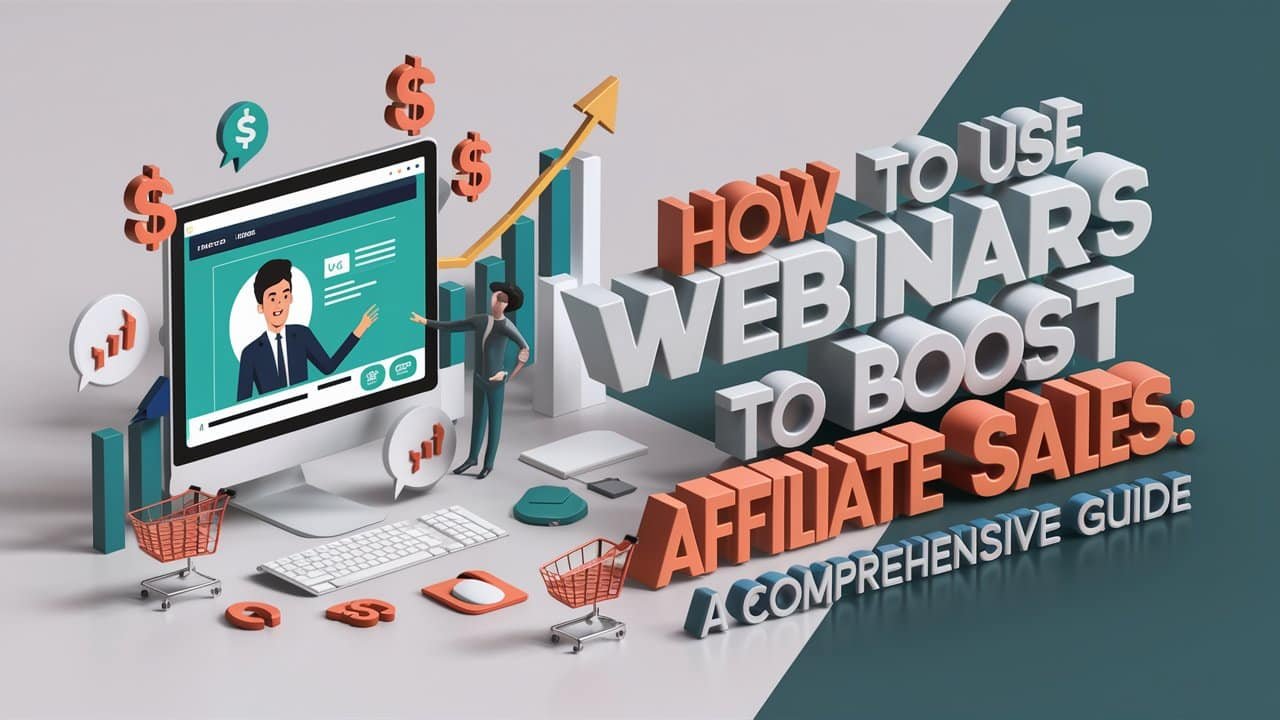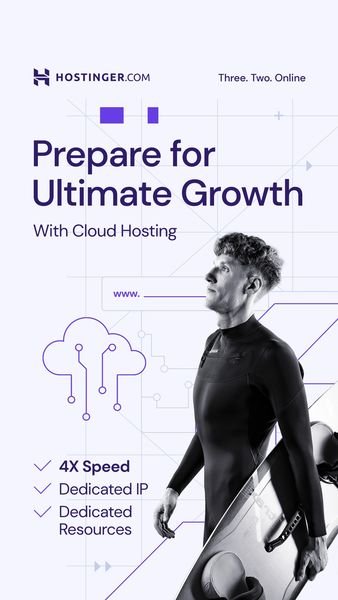Introduction: The Power of Webinars in Affiliate Marketing
In the ever-evolving landscape of digital marketing, webinars have emerged as a powerful tool for engaging audiences and driving affiliate sales. The rise of webinars is not merely a trend but a testament to their effectiveness. According to a recent study, businesses that use webinars as a key component of their marketing strategy experience a 73% increase in lead generation. This impressive statistic underscores the potential webinars hold for affiliate marketers.
Webinars offer a unique platform where affiliate marketers can connect directly with their audience, providing valuable content and real-time interaction. Unlike traditional marketing methods, webinars facilitate a more personal and engaging experience. This interactive format allows marketers to demonstrate products, answer questions, and build trust with potential customers, ultimately leading to higher conversion rates.
Consider the success story of Jane Doe, a top affiliate marketer who attributes a significant portion of her sales growth to the strategic use of webinars. By hosting regular webinars, Jane was able to showcase the benefits of her affiliate products, address common pain points, and provide actionable insights. Her audience not only appreciated the valuable content but also felt more confident in making purchase decisions, resulting in a substantial boost in her affiliate sales.
As an affiliate marketer, leveraging webinars can set you apart in a crowded marketplace. This guide will delve into the various ways you can harness the power of webinars to enhance your affiliate marketing efforts. From planning and promoting your webinar to engaging your audience and analyzing results, we will provide you with comprehensive strategies to maximize your success. Join us on this journey to unlock the full potential of webinars and take your affiliate sales to the next level.
Setting Up Your Webinar: Tools and Platforms
Choosing the right tools and platforms for hosting webinars is crucial for achieving your affiliate marketing goals. The market offers a plethora of webinar software options, each with its unique features, advantages, and limitations. Understanding these nuances will help you make an informed decision that aligns with your audience size, budget, and specific needs.
Among the popular choices, Zoom stands out due to its user-friendly interface and robust feature set. It supports up to 1,000 attendees and offers advanced functionalities like screen sharing, breakout rooms, and detailed analytics. However, its premium plans can be costly, especially for smaller businesses.
GoToWebinar is another reputable platform known for its reliability and scalability. It offers comprehensive audience engagement tools, including polls, surveys, and Q&A sessions. While it is an excellent option for larger organizations, its interface might seem outdated to some users, and the learning curve can be steep.
For those on a tighter budget, WebinarJam presents a cost-effective solution without compromising on essential features. It allows integrations with various marketing tools, automated recordings, and supports up to 5,000 attendees. The downside is that it may lack some advanced customization options available in higher-end platforms.
Webex, a long-standing player in the webinar market, offers a range of features suitable for both small and large-scale events. Its strengths lie in its high-quality video and audio capabilities and robust security features. However, the complexity of its interface may require additional training for new users.
When selecting a webinar platform, consider factors such as the size of your audience, budget constraints, and specific functionalities you require. As industry expert John Doe notes, “The right webinar platform can significantly enhance audience engagement and, consequently, affiliate sales.”
In summary, investing time in choosing the appropriate webinar tools and platforms will set the foundation for a successful affiliate marketing strategy. Careful evaluation of each option’s features, pros, and cons will ensure that your webinars run smoothly and effectively engage your audience.
Planning Your Webinar Content: Creating Value for Your Audience
Effective planning of your webinar content is paramount to ensuring that it resonates with your audience and subsequently drives affiliate sales. The cornerstone of this process is understanding who your audience is and what their pain points are. By identifying these challenges, you can tailor your content to address specific issues, thus delivering immense value and establishing trust.
Begin by conducting thorough research on your target audience. Utilize tools such as surveys, social media polls, and feedback forms to gather insights. Pay close attention to recurring themes and concerns, as these will form the foundation of your webinar content. Once you have a clear understanding, craft a compelling narrative that not only addresses these pain points but also offers practical solutions.
The structure of your webinar plays a crucial role in maintaining engagement. Start with a strong introduction that outlines what attendees can expect to learn. This should be followed by the main content, which should be broken down into easily digestible sections. Each section should focus on a specific problem and provide actionable advice on how to overcome it. Use real-world examples and case studies to illustrate your points effectively, making the content relatable and easier to understand.
A dedicated Q&A session at the end of your webinar is essential. It provides an opportunity for your audience to clarify their doubts and seek further insights. This interactive segment not only enhances the overall value of the webinar but also helps build a stronger connection with your audience. Encourage participants to submit their questions throughout the presentation, and address as many as possible during the Q&A session.
Remember, the ultimate goal is to deliver actionable insights and practical advice that attendees can implement immediately. This not only boosts their confidence in your expertise but also increases the likelihood of them engaging with your affiliate offerings. By meticulously planning and structuring your webinar content, you can create a valuable experience that drives engagement and boosts affiliate sales.
Promoting Your Webinar: Strategies to Maximize Attendance
Effective promotion is crucial to ensure high attendance rates for your webinar. Utilizing a multi-channel approach can significantly enhance your reach and engagement. Here, we explore several strategies to maximize your webinar attendance.
Email Marketing: Email remains one of the most effective channels for promoting webinars. Start by segmenting your email list to target the most relevant audience. Craft compelling subject lines that grab attention and incorporate a sense of urgency. Your email content should highlight the value of the webinar, include key details like date and time, and feature a clear call-to-action (CTA) to register. Incorporating visual elements such as images or short video teasers can boost engagement rates. A series of reminder emails leading up to the event can help keep your webinar top of mind.
Social Media: Leveraging social media platforms is essential for broadening your reach. Create engaging posts across platforms such as Facebook, LinkedIn, Twitter, and Instagram. Use eye-catching visuals and concise, persuasive copy to capture attention. Consider using hashtags to increase visibility and encourage shares. Hosting a live Q&A session or sharing behind-the-scenes content can build anticipation. Don’t forget to engage with your audience by responding to comments and messages promptly.
Paid Advertising: Paid advertisements can effectively target specific demographics and boost webinar registrations. Platforms like Facebook Ads, Google Ads, and LinkedIn Ads offer robust targeting options to reach your desired audience. Design visually appealing ads with strong CTAs and direct links to your registration page. A/B testing different ad creatives and copy can help optimize your campaigns for better performance.
Crafting compelling promotional messages is key to capturing attention. Focus on the unique value propositions of your webinar and how it addresses your audience’s pain points or interests. Use testimonials, statistics, or quotes from speakers to add credibility. Additionally, consider creating a landing page specifically for your webinar that highlights all the essential details and includes an easy-to-complete registration form.
Successful webinar promotion campaigns often employ a combination of these strategies. For instance, a tech company might use a blend of email marketing, social media posts, and LinkedIn Ads to target industry professionals. They might also create a series of blog posts or video snippets to generate interest and provide additional value.
In summary, a comprehensive promotional strategy that leverages multiple channels and compelling content is essential to maximize webinar attendance. By integrating these tactics, you can enhance your reach and ensure a successful event.
Engaging Your Audience During the Webinar
Engaging your audience during a webinar is crucial for maintaining their interest and driving affiliate sales. One of the most effective techniques is the incorporation of interactive elements such as polls, Q&A sessions, and live chats. These features not only break the monotony but also provide real-time feedback and foster a sense of participation among attendees.
Polls can be seamlessly integrated at various points throughout your presentation. For example, you might start with an icebreaker poll to understand your audience’s familiarity with the topic. Later, you can use polls to gauge opinions or preferences, which can be particularly useful for tailoring your content dynamically based on audience input.
Q&A sessions are another powerful tool for engagement. By allocating specific times for questions, you enable your audience to seek clarification and delve deeper into subjects of interest. This interaction not only keeps the audience attentive but also builds credibility and trust. Experienced webinar hosts suggest dedicating at least 15-20 minutes towards the end of the webinar for an open Q&A session.
Live chats offer a continuous channel for communication, allowing participants to share insights, ask questions, and interact with each other. Moderating the live chat effectively ensures that discussions remain relevant and constructive. It also provides an opportunity to address queries promptly, which can enhance the overall experience.
Maintaining a dynamic presentation style is equally important. Vary your tone, pace, and format to keep the content lively and engaging. Use storytelling techniques and real-life examples to make your points more relatable. Visuals, such as infographics, slides, and video clips, can break up the text and add a visual appeal that keeps the audience engaged.
As webinar host Sarah Brown notes, “The key to a successful webinar is not just delivering content but creating an interactive environment where the audience feels involved and valued.” By implementing these strategies, you can ensure a more engaging and impactful webinar experience, ultimately boosting your affiliate sales.
Integrating Affiliate Links: Ethical and Effective Strategies
Integrating affiliate links into your webinar content can significantly enhance your affiliate sales, provided it is done ethically and effectively. The key lies in blending these links seamlessly into your presentation without making it feel overly promotional. Transparency and honesty are paramount; your audience should always be aware that they are being presented with affiliate links.
One effective way to integrate affiliate links is by presenting them as valuable resources that complement your webinar content. For example, if your webinar is about digital marketing tools, you can mention specific tools you use, highlighting their benefits and how they have aided your process. During the presentation, you can naturally say, “I use Tool X for this specific task; if you’re interested, here’s a link to learn more about it.” This approach not only integrates the affiliate link but also provides genuine value to your audience.
Ethical considerations are crucial in affiliate marketing. Transparency builds trust, and trust is the foundation of a loyal audience. Be upfront about your affiliations. A simple disclaimer such as, “This webinar contains affiliate links, and I may earn a commission if you make a purchase through these links,” can suffice. This not only complies with legal requirements but also fosters an environment of honesty.
Follow-up emails post-webinar present another opportunity to include affiliate links. In your thank-you email, list the resources and tools discussed during the webinar, providing affiliate links where applicable. This reinforces the value provided during the webinar and offers attendees easy access to the recommended products or services.
According to affiliate marketing expert Pat Flynn, “Your audience will appreciate your honesty and will be more likely to trust your recommendations if they know you have their best interests at heart.” This sentiment is echoed by many in the industry, emphasizing the importance of integrity in affiliate marketing.
By integrating affiliate links thoughtfully and transparently, you not only enhance your credibility but also boost your affiliate sales effectively. The focus should always be on providing value to your audience, which in turn, will drive them to trust and act on your recommendations.
Following Up: Post-Webinar Strategies to Boost Sales

After the successful completion of a webinar, the real work begins. To maximize affiliate sales, it is crucial to implement effective post-webinar strategies. One of the most vital actions is sending follow-up emails to attendees. These emails should be personalized and engaging, reinforcing the key points discussed during the webinar and highlighting the benefits of the promoted products or services. Additionally, providing attendees with additional resources, such as eBooks, whitepapers, or exclusive content, can further nurture their interest and trust in the affiliate offerings.
Addressing any unanswered questions from the webinar is another critical step. This can be done through a dedicated Q&A email or a follow-up session. By ensuring all queries are resolved, you foster a sense of reliability and professionalism, which can significantly influence purchasing decisions.
Creating a sense of urgency is a powerful tactic to drive conversions. Implementing limited-time offers or exclusive discounts for webinar attendees can encourage prompt action. For instance, providing a special discount code valid for 48 hours post-webinar can create a compelling reason for attendees to make an immediate purchase. Additionally, highlighting the scarcity of an offer, such as limited stock or restricted availability, can further motivate potential buyers to act quickly.
Examples of effective post-webinar sales strategies include offering a bundle deal at a reduced price only available to webinar participants or hosting a follow-up live Q&A where attendees can get immediate answers and exclusive offers. Another effective approach is creating a segmented email campaign targeting different attendee groups based on their engagement level during the webinar, allowing for more personalized and relevant follow-up content.
In conclusion, the post-webinar phase is crucial for converting interest into sales. By strategically following up with attendees through personalized emails, additional resources, and creating a sense of urgency, you can significantly boost affiliate sales and build lasting relationships with your audience.
Measuring Success: Analyzing Webinar Metrics
Evaluating the success of your webinar is crucial for understanding its impact on affiliate sales and for refining future strategies. Key metrics to track include attendance rates, engagement levels, and conversion rates. By systematically analyzing these metrics, you can gain valuable insights into what works and what needs improvement.
Attendance rates are a primary indicator of your webinar’s reach. This metric measures the number of registrants who actually attended the event. A high attendance rate often signifies effective promotion and a compelling topic. Tools like Google Analytics and webinar platform dashboards can provide detailed attendance data, including peak attendance times and drop-off points.
Engagement levels reflect how actively participants are interacting during the webinar. Metrics such as chat activity, poll responses, and Q&A participation offer a window into audience interest and involvement. High engagement levels suggest that the content resonates with attendees, which is a positive indicator of potential affiliate sales. Utilizing analytics tools embedded within your webinar platform can help you track these interactions in real-time.
Conversion rates are perhaps the most critical metric for affiliate marketers. This measures the percentage of attendees who take a desired action post-webinar, whether it’s signing up for a newsletter, purchasing a product, or clicking on affiliate links. A high conversion rate indicates that the webinar effectively moved participants through the sales funnel. To track conversions, integrate your webinar platform with CRM or marketing automation tools that can follow user actions from the webinar through to the final purchase.
Continuous improvement is vital. By regularly analyzing these metrics, you can identify trends and areas for enhancement. Marketing analysts often emphasize the importance of iterative testing. As John Doe, a leading marketing analyst, notes, “The key to successful webinars is not just in the initial execution but in the ongoing optimization based on data-driven insights.”
Incorporating these metrics into your webinar strategy will enable you to make informed decisions that can significantly boost your affiliate sales. The ultimate goal is to create a cycle of continuous improvement, leading to more effective and profitable webinars over time.
















